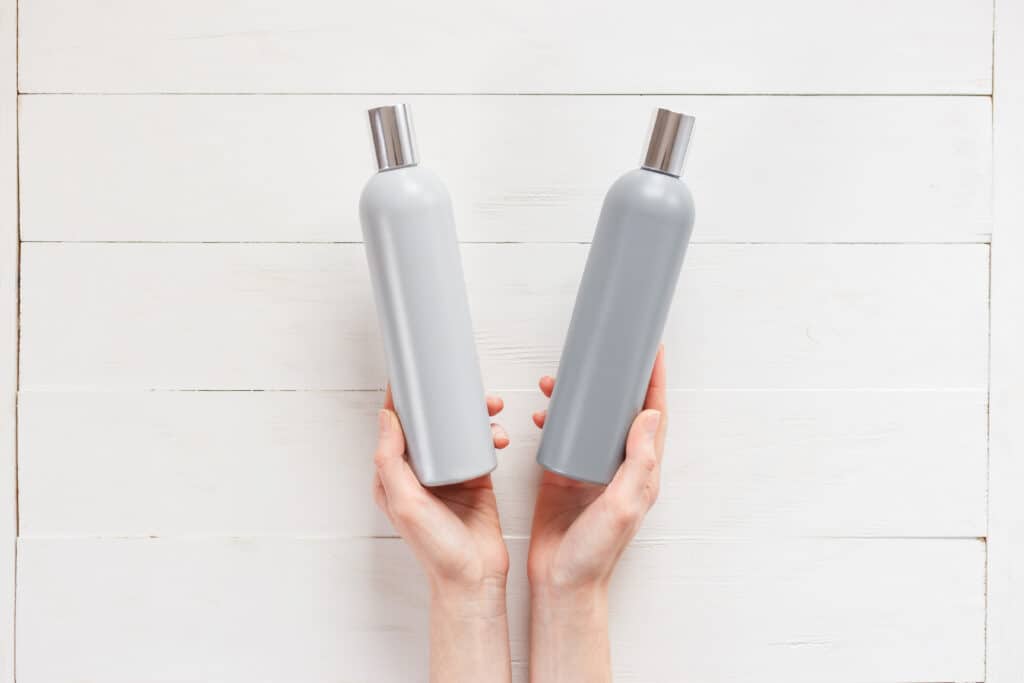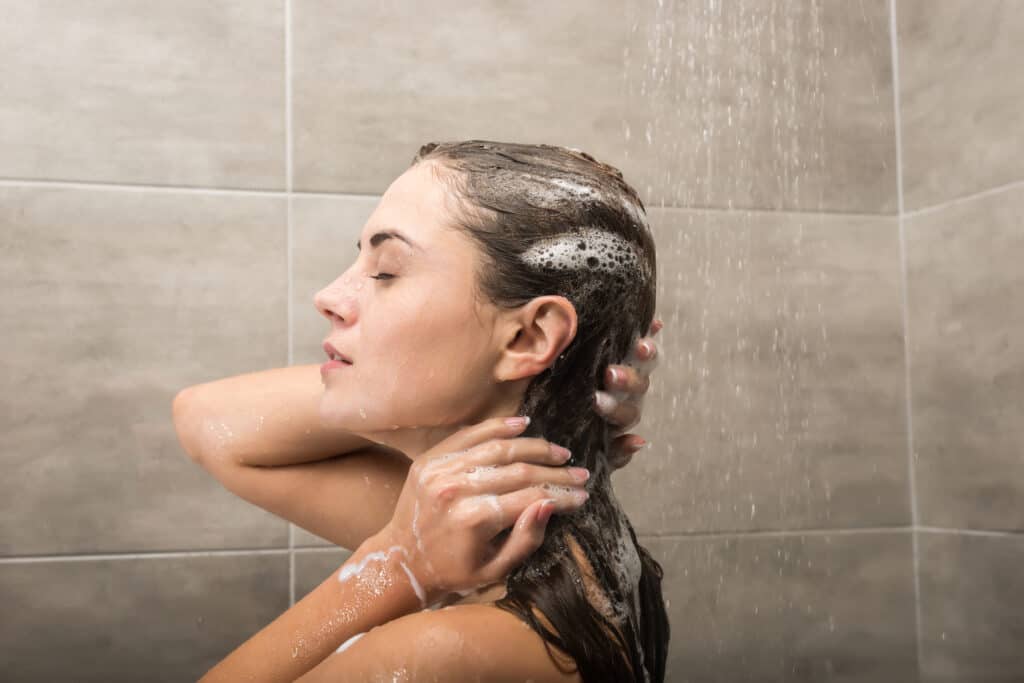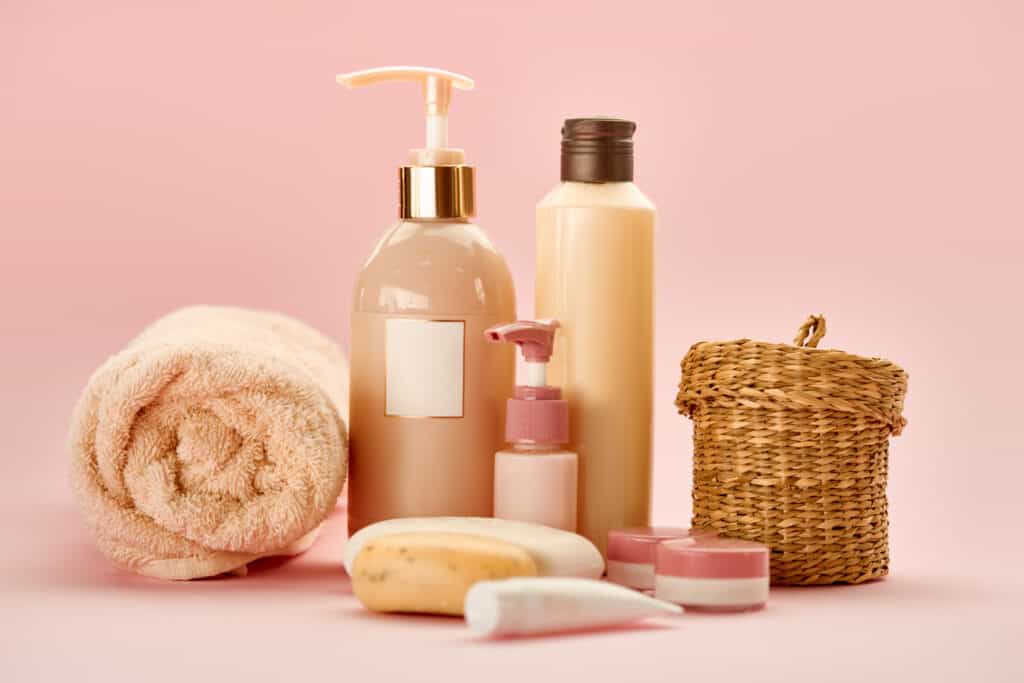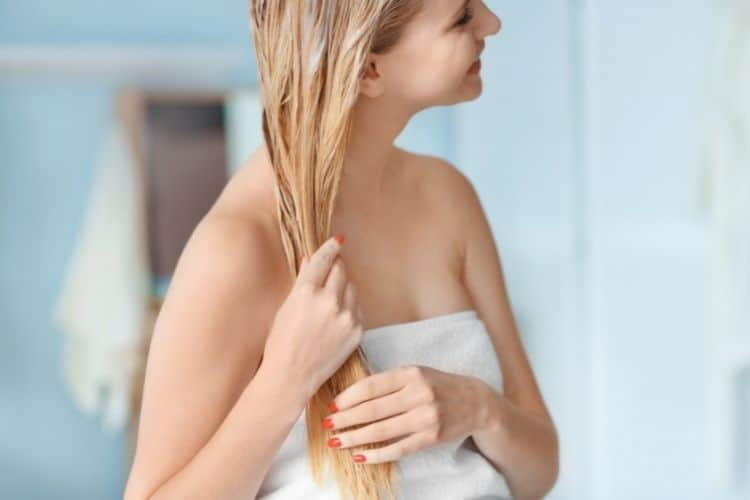Our hair is arguably one of our most beautiful accessories, similar to a crown on our heads, and taking care of it properly goes beyond just a basic haircut and styling. Healthy hair starts with its hygiene, ensuring that your locks are free from unwanted grease, grime, and build-up.
This is why you should invest in a good shampoo and conditioner when taking care of it: they go hand-in-hand to give you soft, shiny, glossy locks. However, trying to decide which is better for your own unique needs can be challenging, especially if you find that your hair isn’t quite doing what you want it to do.
To help dispel some of the confusion between these two products, we are going to shed some light on each one’s fundamental characteristics so we can make a complete comparison. That way, you can learn everything you need about both products to make a better choice as to which is right for you.
Main Differences Between Shampoo vs. Conditioner
The notable differences between shampoos and conditioners include:
- Shampoos fulfill a cleaning function, whereas conditioners are for both the hair and the scalp (giving it shine, softness, and manageability).
- Shampoos are the first step in cleaning your hair, whereas conditioners are applied after shampooing and are left on your hair for longer to allow it to better absorb its ingredients.
- Shampoos clean off any product buildup in your hair and promote better hair growth and circulation of minerals, whereas conditioners help to prevent frizz and improve the overall appearance of your hair.
- Shampoos are made from ingredients with detergent properties, whereas conditioners contain moisturizers and brighteners, such as silicones.
- All shampoos must be rinsed after applying, whereas conditioners can be left for a while or rinsed immediately, depending on their use and characteristics.
Similarities Between Shampoo and Conditioner
And of course, shampoo and conditioner have their own similarities. These include:
- Many shampoos contain some of the nourishing agents included in conditioners to minimize the amount of moisture that they soak and replenish the hair’s natural oils.
- Both products contain essential oils or fragrances.
- Depending on the type of conditioner, it can contain gentle surfactants that cleanse your hair just as well as shampoo does. (This is known as “co-washing.”)
Everything You Need To Know About Shampoo
Shampoo is a little powerhouse in the hair-care department, and it works seriously hard to help keep your hair clean and free from oil and other issues (like dandruff or seborrheic dermatitis). In a nutshell, shampoo has essentially three functions:
- Remove the sweat and dirt from our hair.
- Eliminate product build-up.
- Stimulate the scalp for better growth and circulation.
A good quality shampoo must be able to properly clean the hair without completely removing its natural oils and moisture. In addition, it must leave the hair slightly detangled so you could easily do the next step, which is applying the conditioner.
That said, the main point of using shampoo is so you could literally clean the hair of dirt and hair-styling products. While other shampoos may have additional beneficial properties, as long as it cleans your hair, then it’s safe to say your shampoo is doing its job.
Shampoo Characteristics
There are two kinds of shampoo products that you should know about: shampoo with soap (surfactants) and soap-free shampoo. Shampoos with harsh surfactants tend to be used the most.
These tend to have a higher pH and they form a large amount of foam that removes the scalp’s natural oils, largely thanks to a harsh surfactant called “sulfates.”
The result of using these products, unfortunately, is typically dry and damaged hair. Treating it to improve its appearance often weakens the hair even more.
To improve the effects of shampoo with these surfactants, we recommend an acidic rinse based on citric acid or apple cider vinegar, which together with water will remove the remains of the product.
On the other hand, failing that, it’s best to use some type of treatment that eliminates alkaline deposits. That way, your hair can regain its vitality over time.
In terms of health, we recommend sulfate-free shampoo, which is more acidic and does not damage the scalp. While they do have a little bit of a learning curve (they don’t have the same lush lather like other shampoos), they still get your hair nice and clean without stripping it.
Cleansing Action Of the Shampoos
Are you ready for a little bit of a science lesson? The mechanism of action of shampoo is fairly straightforward, but it can somewhat technical.
The cleansers contained in shampoo are made up of specialized molecules that have a hydrophobic and a hydrophilic end. This is called a phospholipid, and these are the surfactants that remove the dirt and grime from your hair.
The phospholipids combine together so they can make a bubble. Within this bubble, their hydrophobic ends stay inside where the water can’t reach, and the hydrophilic end forms a shield.
These tiny bubbles trap dirt and other things when they come in contact. By rinsing off the shampoo, you are also rinsing off the trapped dirt in these bubbles.
Types Of Shampoos
Ideally, a shampoo with a neutral or acidic pH, that is, a pH of 7 or less is the best option. This will help untangle it and keep it in good condition, no matter what type of hair you have. Depending on the characteristics of the water you use to wash your hair, your shampoo will make more or less foam.
But remember: foam is not always a sign of proper functio4ning, and gentle surfactants don’t even really lather up at all. While a good shampoo may require a small amount to fulfill its functions of cleaning both the hair and the scalp, it’s not necessarily a requirement to have clean hair.
Soap-free shampoos also need an active component that will perform the detergent function, determining their cleaning ability. The most common are the aforementioned sulfates — “lauryl triethanolamine sulfate” and “sodium lauryl sulfate,” typically.
In addition to this, they can contain an infinite amount of additives that will make each product specialized depending on the needs of whoever uses it. Among some types, we have:
- Neutralizing Shampoo. This type of shampoo is special for hair with permanent chemical treatments, either to straighten or to curl.
- Shampoo for Dry or Damaged Hair. Its additive consists of different types of oils, which can be coconut, almond, or hydrolyzed proteins and amino acids. They are specialized to restore the vitality of dry hair and can also fix the damage caused by chemicals or extreme heat. Preferably, it should not be used before a perm.
- Detangling or Conditioning Shampoo. This is a combination of both shampoo and conditioner. Being the classic 2-in-1, this shampoo also has conditioning functions. You can use it on high porosity, damaged, and dry hair. Avoid using it before getting a perm as well.
- Moisturizing Shampoo: This shampoo contains a mixture of amino acids, hydrolyzed proteins, and coconut and almond oil, which gives it moisturizing properties. Similar to the previous ones in its uses, it offers a better appearance to dry and damaged hair.
- Anti-Dandruff Shampoo. This contains zinc pyrithione and you can use it to prevent dandruff. However, it is not advisable to use it right before a perm or any straightening procedure. It also dries out the hair when used too much. In some countries, it is sold under a medical prescription and is limited only to severe cases of dandruff. In the long term, it can cause dermatitis and brittle hair.
Shampoo Application Technique
A shampoo application process is only successful with both a good product and a good technique. It does not matter even if you have the best shampoo in the world. If you don’t know how to apply it, you will never obtain the best results.
It is necessary to massage the scalp during the procedure because we need to remove as much dirt and styling chemicals as we can. But you do need to be extra careful while doing this.
Excessive massaging over the long run could roughen your hair and damage your scalp. You must also massage your scalp with your fingertips, without using the nails, to avoid causing any damage.
You should also be sure to use an appropriate amount of shampoo, according to the amount of hair you have and its length. If you don’t use enough, it won’t clean your hair at all.
But if you use too much, then you would just be wasting the product. Scrub the shampoo all over for an even distribution throughout your hair, using circular motions.
After massaging for a minute or two, you should rinse the hair with the same care as you did while applying it. If necessary, repeat the process for the second application of shampoo. This will depend on how often you wash your hair, though. If you wash it quite frequently, a single application is enough.
Be careful not to accidentally tangle your hair while doing this. Wet hair is especially weak and fragile. Pulling on it while it’s wet could cause them to break. But even so, you must make sure that there is no shampoo residue left on your hair because it will cause dryness and an annoying itch. Rinse it well. After this, you can prepare for the next step.
Everything You Need To Know About Conditioners
Hair conditioner is a product used for the care and maintenance of hair’s quality. It helps maintain the hair’s hydration, softness, and styling. It can prove shine and manageability, whether it’s dry or wet.
Using a conditioner also prevents breakage and damage. And because of its moisturizing properties, it can also reduce frizz.
Types Of Conditioners
There are several different types of conditioners that you can choose from, depending on your hair type and its needs. Coarser, thicker hair may have different needs from finer, straighter hair.
- Deep Conditioners or Conditioning Masks. These are heavy and thicker in consistency. They have a great ability to adhere to the hair structure, improving its appearance, providing shine, and enhancing manageability. To increase their effectiveness, you must let them sit on your hair for a longer time than regular conditioners.
- Normal or Regular Conditioners. Their function is similar to the previous one, but their potency is a little lower and their application is a lot more easier. You just have to let them sit for a little less time. They can also be classified depending on hair’s specific needs.
- Restructuring Conditioners. These are conditioners that give a specific structure to your hair, not by changing their chemical bonds or repairing them, but by covering it with substances (such as silicones). This gives it a more voluminous and shiny appearance. Specialized for damaged hair, its effect is largely temporary.
- Detangling conditioners: All conditioners fulfill this function to a greater or lesser extent, giving nice slip and a silky texture to your hair. However, some are specialized ones that are meant for this task. Detangling conditioners are perfect for children or those with long and curly hair.
Pro Tip: It would be best to use a deep conditioner at least once a week to help keep it glossy and shiny, but it all depends on your hair’s health. If your hair has been damaged so much or if you have been styling with heat, you may want to use this more often.
For all colored or chemically-treated hair, it is recommended that you use this type of conditioner. In the same way, if you constantly expose your hair to the sun or swimming pool water, this type of conditioner is good for you.
That said, avoid daily use. Using it too often reduces its effectiveness so you may want to leave a resting period between each application.
Conversely, you may benefit from a basic daily conditioner. There are conditioners for dry hair, damaged hair, straightening, and curling conditioners, and so much more. There are even pigmented conditioners to take care of your hair color. They should be used during every wash and form a part of your routine.
However, you must be careful with the amount you apply since you will not want it to affect your hair’s volume. With just the right amount, your hair will look healthy and not dull or flat.
Use Of Conditioner According To Your Hair Type
Normal Hair
If you have hair of intermediate density, is neither greasy nor dry, and not color-treated or has any kind of chemical styling, the best option for you is to only apply conditioner on the tips.
What remains on your hands, you should distribute it throughout its length. If the climate in your area is very cold, then we recommend that you apply the conditioner to all of your hair but apply a lesser amount to their roots.
Thin Hair
Fine hair has the risk of breaking and tangling more easily. For those with thin hair, conditioners should be a mandatory part of the routine to give it a little more strength. You should use a lightweight product so you don’t sacrifice too much volume. If your hair is oily, avoid the roots as much as you can.
Thick Hair
The more softeners this conditioner has, the better it is for thick hair because they do not add unnecessary volume. In fact, they could even reduce it. Depending on the characteristics of the hair, you should choose a conditioner meant for either oily or dry hair.
Curly Hair
Curly hair needs several extra steps to look perfect. This type tends to be dry, so a moisturizing conditioner is the best way to soften it and make it more manageable.
Long Hair
Long hair is beautiful, but it has a major disadvantage: its ends can dry out if you do not constantly hydrate them. You have to keep your hair well-moisturized to maintain its shine and softness. Using only a conditioner won’t be enough. You must supplement it with masks and treatments at least once a week.
Dyed Hair
If you have any type of color treatment on your hair, then you need a deep and powerful conditioner to revitalize it. Chemicals can easily damage the structure of your hair. Masks and deep treatments also help.
Virgin and Oily Hair
If your hair has never been dyed, colored, or straightened, then you may even be able to skip the conditioner step. But if you don’t, you can opt for a very light one so it won’t add more oil to your hair. Make sure to rinse the conditioner well.
Conditioner Application Technique
The first step is to rinse all the shampoo so that no residue remains. Then remove the excess water, preferably with a towel. Afterward, distribute an appropriate amount of conditioner through all the strands of your hair, working from the ends upwards.
You should let this sit for a moment. Finally, rinse everything without having to rub your hair excessively.
Frequently Asked Questions
Answer: Shampooing once a week does allow your body’s natural oils to nourish your hair, but this often leads to your hair looking extremely greasy and oftentimes gives off a pungent odor, too.
For some, it can even lead to a fungal buildup (called “seborrheic dermatitis”). Therefore, it’s advisable to shampoo your hair every two to three days (or more, depending on your hair’s unique needs) and use a conditioner to make up for the lost natural oils.
Answer: Experts recommend shampooing your hair 2-3 times a week for squeaky-clean hair. However, depending on your own hair type, you might have to raise or reduce that number.
At the end of the day, your main concern is ensuring that there’s no buildup or greasiness in your hair, and that the frequent washing isn’t damaging it, either.
Answer: Depending on your hair type, shampooing it every day can possibly render it completely dry and lifeless. This is because the extremely essential nutrients that your body supplies to your hair come in the form of its oils, and the shampoo essentially wash it all off. However, if you’re prone to oily hair and sebum buildup, you may need to wash more or less frequently.
Answer: Lately, researchers have found that washing your hair with just conditioner helps prevent dryness. If your hair is extremely dry, you can substitute shampoo with conditioner, a process known as “co-washing.”
However, washing your hair is super important, so you should always try using a mild shampoo at least once every few weeks to remove silicones and buildup.
Answer: The roots of your hair are already well-nourished, as they are the closest to your scalp. So while you’re conditioning your hair, try to focus on properly coating the ends of your hair, as they are usually the most heavily damaged and malnourished.
Leave the conditioner on for as long as the package instructions say, and then rinse it off with lukewarm water.
Answer: If you find that its application helps your hair look and feel better, then you should absolutely go for it! However, you shouldn’t be using shampoo along with the conditioner, as shampooing your hair every day can harmful for your hair if it’s already dry, brittle, or prone to breakage.
Answer: Although instructions for how long you should be keeping the conditioner on your hair are mentioned on the bottle, most conditioners are to be left on your hair for 2-3 minutes for the best results. However, if you’re using a special conditioner, the time period may differ greatly.
Final Thoughts
Now that you know the difference between shampoos and conditioners, do not hesitate to give them the right care they need in your routine. Also, do choose the right products for hair’s needs and your personal taste. Taking care of yourself is a unique and fun process, so you should enjoy it!
Looking for more interesting readings? Check out:
- Best Walmart Shampoo Guide
- Is Garnier Cruelty Free? Should You Buy Their Products?
- 7 Best Silicone Free Conditioner Picks [2022]: A Complete Buying Guide
- Dr Squatch Shampoo Review: Is It The Best Shampoo For Men? - April 21, 2022
- 8 Best Aloe Vera Shampoo Products: A Complete Guide - April 19, 2022
- 9 Best Non Binary Haircut Ideas: Which Hairstyle Is Perfect For You? - April 18, 2022






